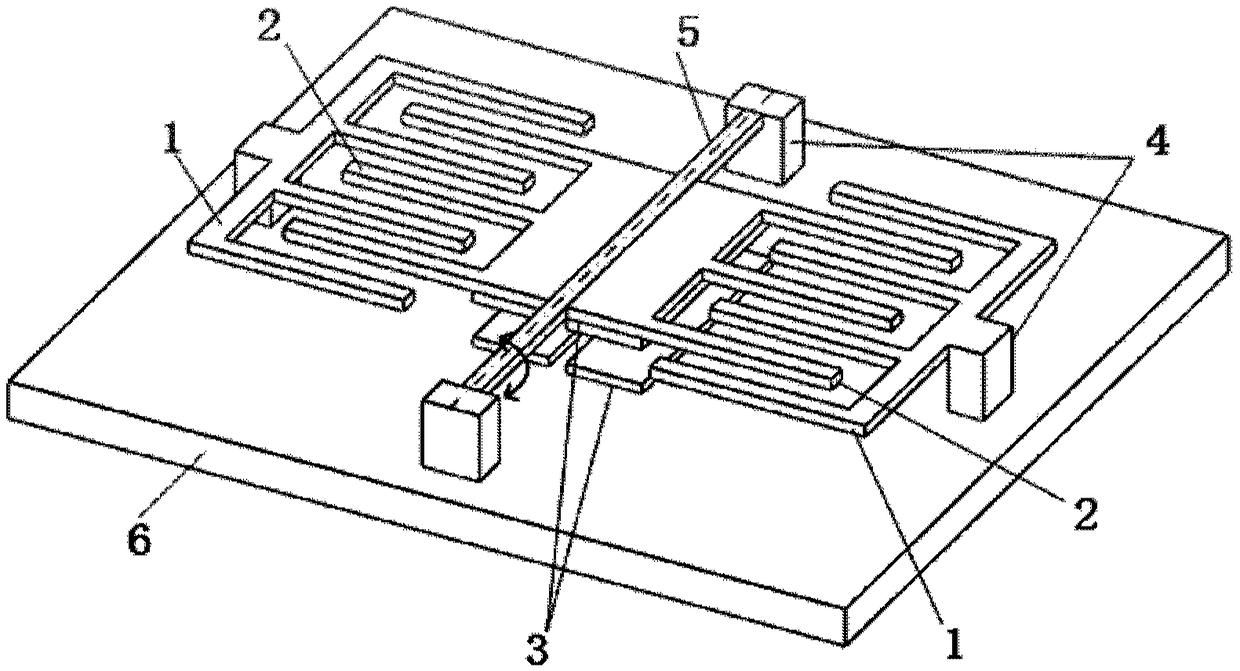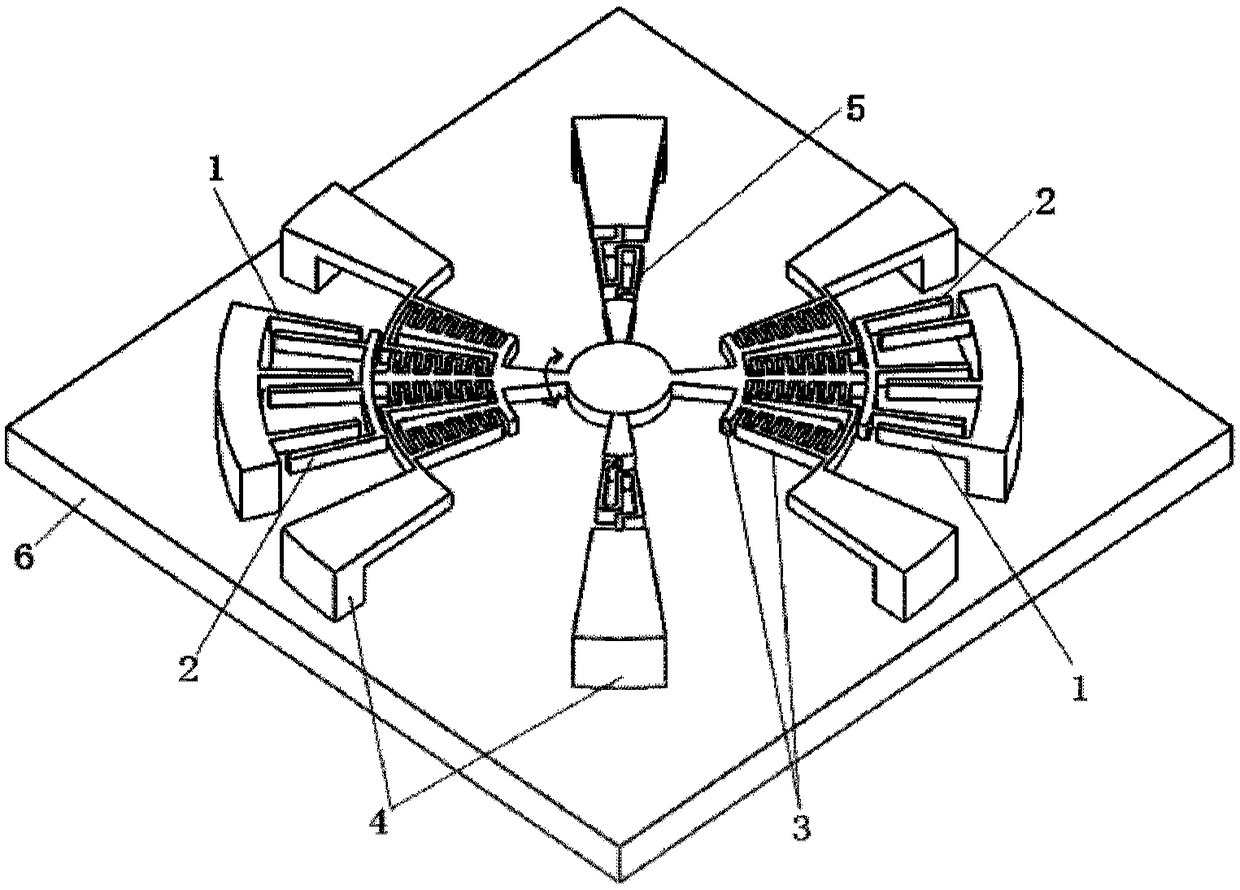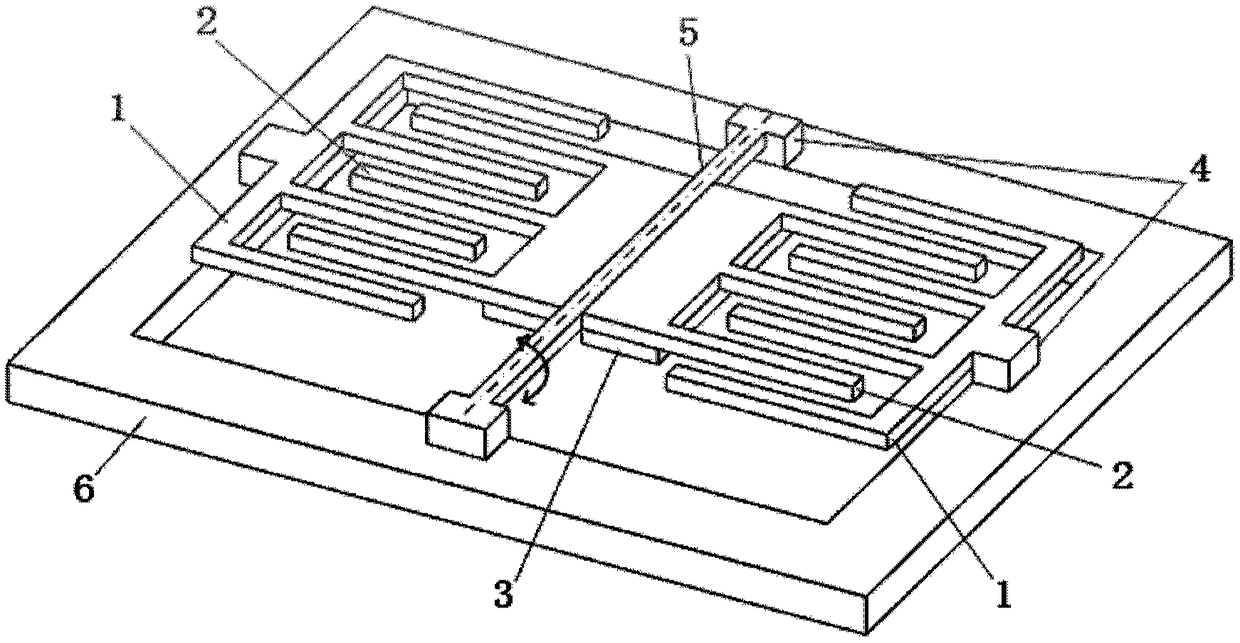Mutual shielding type electric field sensor based on torsional vibration
An electric field sensor and torsional vibration technology, applied in the field of sensors, can solve the problems of weak output signal of the electric field sensor, reduced sensitive structure area, complex structure, etc., to achieve the effect of widening the scope of use, easy assembly, and increasing the sensing area
- Summary
- Abstract
- Description
- Claims
- Application Information
AI Technical Summary
Problems solved by technology
Method used
Image
Examples
Embodiment 1
[0050] Embodiment 1 introduces an example of the structure of a mutual-shielding electric field sensor that uses electrostatic driving to drive movable torsion electrodes to perform out-of-plane torsional vibration.
[0051] figure 1 It is a schematic structural diagram of a mutual-shielding electric field sensor based on torsional vibration according to Embodiment 1 of the present disclosure. refer to figure 1 As shown, in this embodiment, the mutual shielding electric field sensor based on torsional vibration includes: a fixed electrode 1 , a movable torsion electrode 2 , a driving structure 3 , a fixed anchor point 4 , a torsion elastic beam 5 , and a base 6 .
[0052] In this embodiment, the movable torsion electrodes 2 are divided into two groups, which are distributed symmetrically with respect to the axis of symmetry, forming a differential induction structure; the fixed electrodes 1 are divided into two groups, which are distributed symmetrically with respect to the a...
Embodiment 2
[0057] Embodiment 2 introduces an example of the structure of a mutual-shielding electric field sensor that uses electrostatic driving to drive movable torsion electrodes to perform in-plane torsional vibration.
[0058] figure 2 It is a schematic structural diagram of a mutual-shielding electric field sensor based on torsional vibration according to Embodiment 2 of the present disclosure. refer to figure 2 As shown, in this embodiment, the mutual-shielding electric field sensor based on torsional vibration includes: two sets of fixed electrodes 1, two sets of movable torsion electrodes 2, multiple sets of driving structures 3, and fixed anchor points 4; wherein, the fixed electrodes 1. The movable torsion electrode 2 is a strip structure; the torsion elastic beam 5 is a folded beam; the drive electrode corresponding to the drive structure 3 is a comb structure, and the electrostatic driving force is improved through multiple sets of comb teeth; all drive structures are loc...
Embodiment 3
[0061] Embodiment 3 introduces a structural example of a mutually shielded electric field sensor that uses a thermoelectric drive to drive a movable torsion electrode to perform out-of-plane torsional vibration.
[0062] image 3 It is a schematic structural diagram of a mutual-shielding electric field sensor based on torsional vibration according to Embodiment 3 of the present disclosure. refer to image 3 As shown, the working principle of this embodiment 3 is consistent with that of embodiment 1. The mutual shielding electric field sensor based on torsional vibration includes two sets of fixed electrodes 1 and two sets of movable torsion electrodes 2; but the difference lies in: this implementation In the example, the lower substrate corresponding to the electric field induction structure is a hollow structure; the driving structure is set in two groups, and the driving form is thermoelectric driving. By applying different voltages to the driving electrodes on both sides o...
PUM
 Login to View More
Login to View More Abstract
Description
Claims
Application Information
 Login to View More
Login to View More - R&D
- Intellectual Property
- Life Sciences
- Materials
- Tech Scout
- Unparalleled Data Quality
- Higher Quality Content
- 60% Fewer Hallucinations
Browse by: Latest US Patents, China's latest patents, Technical Efficacy Thesaurus, Application Domain, Technology Topic, Popular Technical Reports.
© 2025 PatSnap. All rights reserved.Legal|Privacy policy|Modern Slavery Act Transparency Statement|Sitemap|About US| Contact US: help@patsnap.com



